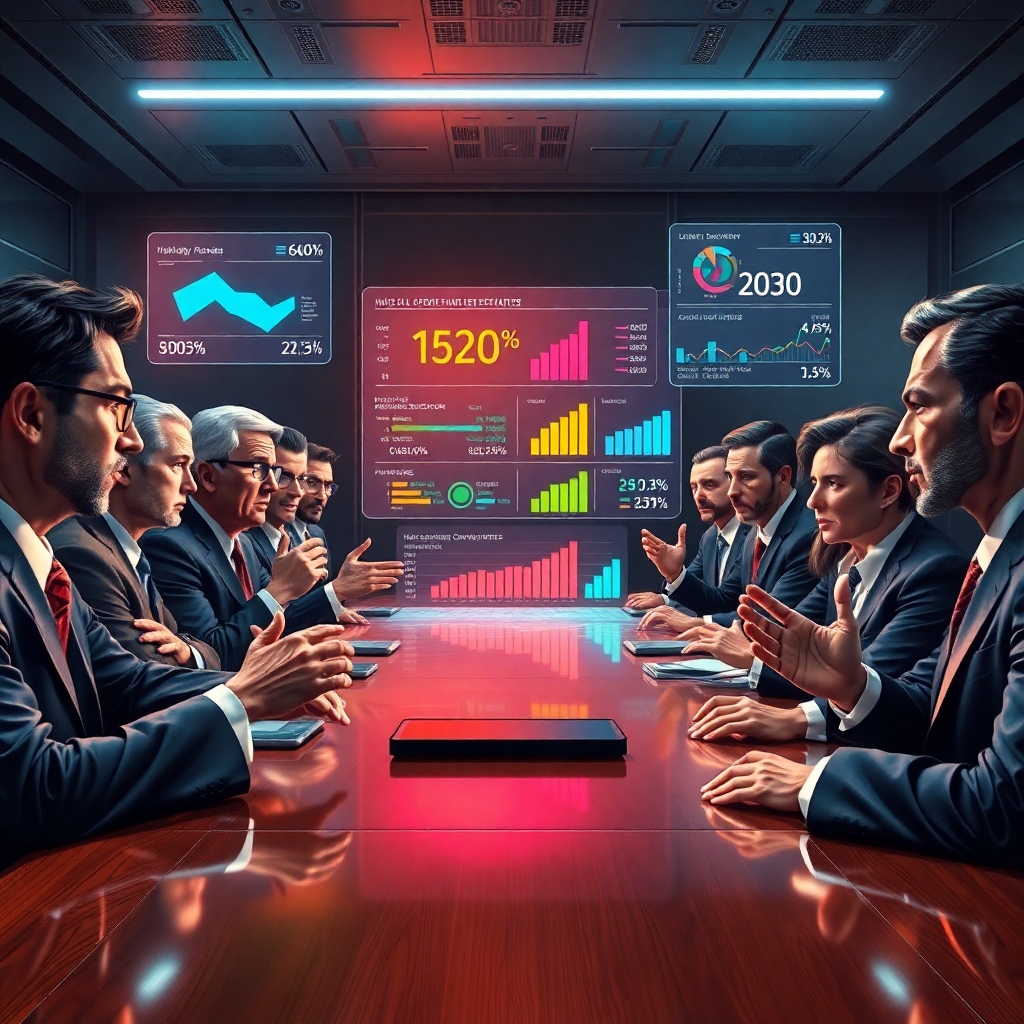AI vs. Jobs: The Clash of Titans and the Ghost of Future Labor
There’s nothing quite like watching billion-dollar companies politely disagree about the end of the world. Or at least, the end of your job. This week, the AI industry—usually a harmonious symphony of optimism and technical jargon—hit a discordant note when Dario Amodei, CEO of Anthropic, warned that artificial general intelligence (AGI) could displace half the global workforce within a decade.
Fifty percent. Half. One in two. As if the future were a coin toss between innovation and obsolescence.
Nvidia and Meta, quick to grab the mic, called Amodei’s prediction “overstated.” One can almost hear the corporate sigh: Not this doomsday talk again.
But beneath the rhetoric lies a tension as old as the loom: will machines liberate us—or replace us?
Dario Amodei: The Prophet of Economic Earthquakes
Speaking at an AI ethics summit in San Francisco—a setting already heavy with existential undertones—Amodei laid out a vision that felt less like a forecast and more like a fire alarm.
“We’re no longer talking about automating routine tasks,” he said, in the calm tone of a man predicting an avalanche. “We’re approaching systems that can perform any cognitive task. That includes lawyers, marketers, educators, even software developers.”
White-collar workers, once the unbothered class in automation debates, are suddenly looking at the abyss—and the abyss may be sending them a calendar invite.
His message to governments? Get moving. Universal basic income. Massive reskilling programs. A social safety net thick enough to catch a civilization in freefall.
Nvidia: AI as Renaissance, Not Reckoning
Nvidia, whose GPUs are the silicon lifeblood of the AI revolution, responded with the confidence of a company selling picks during a gold rush.
“AI is a force multiplier, not a job destroyer,” they said, framing technology as the trusty sidekick, not the usurper. CEO Jensen Huang has consistently argued that AI will enhance creativity, kill monotony, and unlock new professions we haven’t even dreamed up yet.
Besides, Nvidia could point to a simple fact: the AI economy is already creating jobs—armies of prompt engineers, model trainers, ethics consultants, and GPU whisperers. If this is a jobpocalypse, it’s starting oddly well.
Meta: History Rhymes (and Usually Misinforms)
Enter Meta, the company that knows a thing or two about disruption—and controversy. CTO Andrew Bosworth invoked the ghosts of tech panics past: the printing press, the cotton gin, the internet. Each innovation displaced some, employed others, and redefined what work looked like.
“Let’s not panic,” he suggested, with the quiet weariness of a man who’s read too many headlines. AI, in Meta’s view, won’t destroy jobs—it’ll reshape them. That may be cold comfort to copywriters and paralegals, but at least it’s an invitation to adapt rather than surrender.
So, Who’s Right?
Amodei’s grim math and Big Tech’s guarded optimism reflect a deeper truth: nobody knows. The range of forecasts is wide enough to fly a drone through. Goldman Sachs warned in 2023 that 300 million jobs were exposed to automation. MIT, more conservatively, said only 20% of tasks could currently be fully automated.
“Exposure” doesn’t mean elimination, of course. It might mean augmentation, or transformation. Or, in the worst-case scenario, being asked to train the model that will eventually replace you.
Where the Shake-Up Is Already Happening
Some battle lines are already visible:
- Customer Service: Chatbots are now handling more conversations than some call centers ever did.
- Legal Research: Tools like Harvey are reducing the hours (and billables) needed to dig through case law.
- Finance: AI trades faster than humans blink and detects fraud before it happens.
- Content Creation: LLMs are writing articles, scripts, and, yes, even this summary if you squint.
But other fields—medicine, education, caregiving—still resist the algorithm. For now. Empathy and dexterity remain stubbornly human skills.
https://www.reuters.com/technology

Governments Stirring, Slowly
While companies argue, policymakers are waking up to the magnitude of what’s coming. The EU’s AI Act includes provisions to monitor AI’s labor impact. The U.S. Executive Order on AI calls for studies, reports, and contingency plans.
South Korea is already piloting basic income schemes. Canada is testing AI-specific reskilling programs. There’s a sense—tentative, halting—that maybe it’s time to plan for a future that doesn’t look like the past.
What Now?
Whether Amodei’s 50% figure proves prophetic or panic-inducing hyperbole, the central message is clear: doing nothing is not an option. The future of work is up for grabs, and neither nostalgia nor denial will prepare us.
Some steps that don’t require a crystal ball:
- Reskill aggressively: Not just coding bootcamps, but creativity, critical thinking, and AI fluency.
- Support entrepreneurs: New tools will spawn new needs—and new niches.
- Rethink safety nets: Gig work and AI augmentation demand portable benefits and flexibility.
- Write better rules: Transparency, accountability, and fairness must be engineered in—not hoped for.
The Inevitable Acceleration
The debate between Amodei and his corporate counterparts isn’t about whether AI will change everything. It already is. The real question is how quickly, how widely, and with what consequences.
In one version of the future, AI liberates us from soul-crushing labor and ushers in an age of abundance. In another, it hollows out the middle class and deepens inequality at a pace policy can’t catch.
We are somewhere between those poles. And the clock is ticking.
So no, this isn’t just a tech debate. It’s a social contract negotiation. And everyone—from engineers to economists, from regulators to restaurant workers—has skin in the game.
